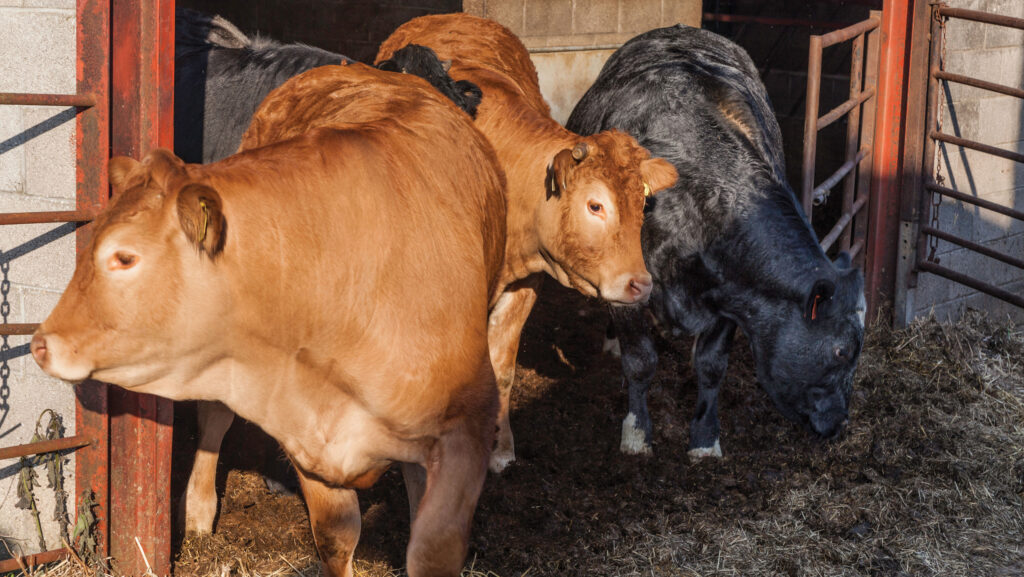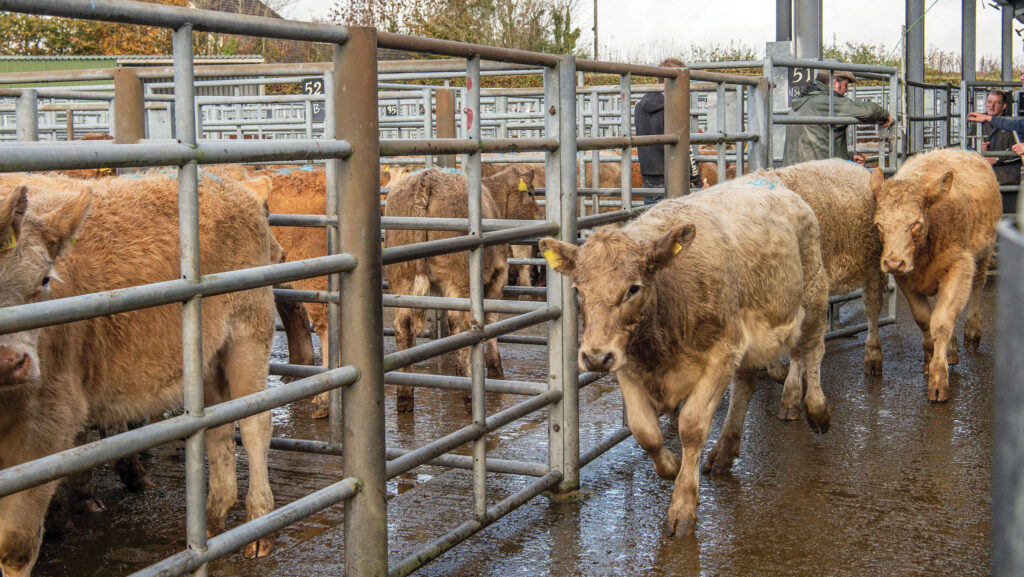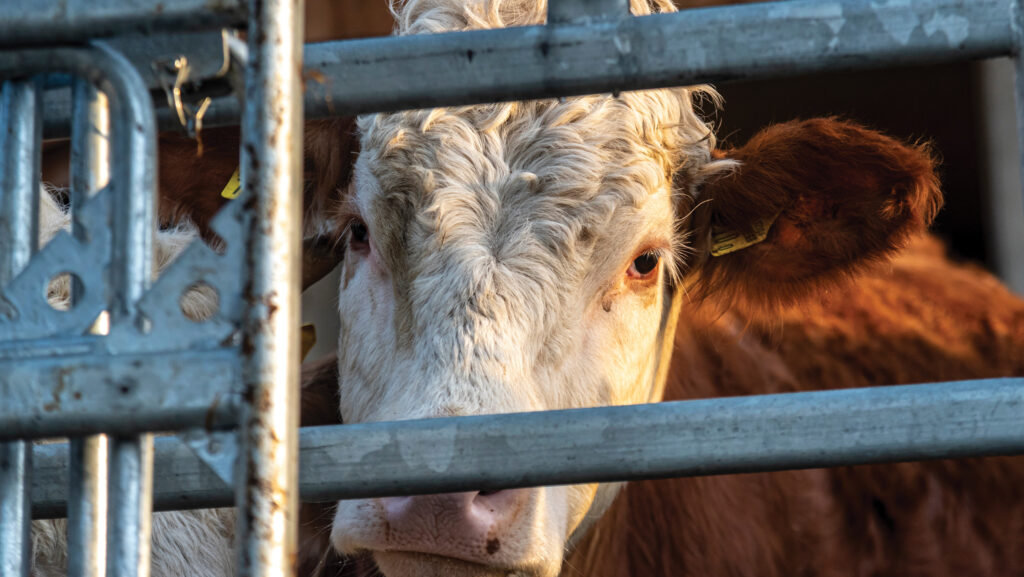How to use a Bud Box system to make cattle handling easier
 © A Room With Views/Alamy Stock Photo
© A Room With Views/Alamy Stock Photo More British farmers are adopting the “Bud Box” principle to get cattle to turn 90deg up a single-file race or into a truck.
Named after the late US rancher and stockmanship expert Bud Williams, the Bud Box makes use of basic cattle behaviour and instinct.
Steve Langrell of cattle crush manufacturer Arrowquip says it is a philosophy rather than a feat of engineering.
Letting the cattle go where the farmer wants them to, rather than making them move there, is the secret to success, he explains.
“Low-stress cattle handling is one of the hardest things to teach, as there are no absolutes and it’s a very subjective matter,” he says.
“Ultimately, it’s the cattle that tell you if your setup isn’t right or your behaviour is wrong.”
See also: Custom-made cattle handling system improves speed and safety
Key terms:
Steve says there are five key terms that should be understood before trying to implement a Bud Box system:
Flight zone
The flight zone refers to the area around an animal where it feels comfortable and secure. When a handler enters this zone, the animal will move to maintain a safe distance.
The size of the flight zone varies depending on factors such as breed, temperament and handling experience.
Pressure zone
The area within the flight zone where the animal starts feeling uncomfortable or threatened, leading to increased stress and movement.
When a handler enters this zone, the animal will begin to move away or become agitated. Moving closer to the animal increases pressure, while moving away releases pressure.
The key thing is reading the cattle and knowing when to release the pressure.
Balance point
A point at the side and front of the animal that the handler can cross to influence its movement.
This is often the animal’s shoulder in alleyways leading up to the race, and is sometimes the eye (in pasture and large pens).
Pressure
Exert pressure from the side of the animal, where it can see the handler, rather than behind, where it cannot.
Animals accustomed to a calm handler will learn to react to the pressure, heading away from the handler.
Non-verbal communication
Handlers must communicate non-verbally with cattle using their position, angle, distance and speed (Pads), and through processes of pressure and release (walking in and out of the pressure zone).

© Farlap/Alamy Stock Photo
Key principles
Understanding what cattle see and some of their key behaviour principles is useful before setting up a Bud Box and experimenting, advises Steve.
He says that cattle:
- Want to see the handler Theories about blanking off race sides and gates have taken a back seat in recent years. If people are somewhere, cattle need to know where they are.
- Want to go around the handler They do not want to turn their backs on people, so instead walk past them by going around them.
- Want to relieve pressure If the handler walks into the animal’s pressure zone, it typically wants to walk away. Some animals require more pressure than others.
- Want to go to other cattle Cattle instinctively want to follow and form a herd. Use this behaviour trait to get the last animals where you want them easily.
- Can think of only one thing at a time Pushing cattle while shouting at them or having dogs bark at them can distract them from the job of entering a pen or walking into a crush.
- Have no patience Rather than looking at a race or investigating a new area the handler wants them to enter, cattle will quickly lose interest and turn to head back to where they know it is safe.
- Want to go in the direction they are headed Balance points and pressure can be used to turn cattle so they are facing the right direction.

© Adobe Stock
How a Bud Box works
Steve explains the seven-step process (see diagrams for letters):
- Entry Cattle walk from a 3-4m wide alley through an open gate (A) into a pen roughly 3-4m wide and 6-9m long, ideally at a brisk walking pace or trot. The number of cattle in the pen should be no more than can fit up the race. The gate into the pen should be latched on the side of the race, setting the handler up to be in the correct position between the race opening and end of the pen. This gate is best sheeted to avoid distractions.
- Motion Initially, cattle walk past the opening (B) the handler wants them to enter. This is best placed close to the entrance they have just come through.
- Gates shut The handler closes the gates, which are now behind the cattle.
- Dead end Closed gates at the opposite end of the pen stop the cattle in their tracks for a few seconds (C), as they realise there is no way forward.
- Turn around Cattle instinctively turn around and start to return from where they came (D).
- Stand in position By the time they turn and head back towards the gate they came through (which is now closed), the handler must be positioned on the cattle side of the opening which they are to pass through (E).
- Into the race The cattle move forward, keeping their eye on the handler. Because they cannot head out through the closed gate, they instead walk around the handler, into the opening and up the race. The handler can walk parallel to the cattle across the balance point to apply pressure if needed.
Tips on working a Bud Box system
- Cattle must choose The key to making the Bud Box system work is for cattle to choose to go up the race.
- Work it from outside If it is deemed safer not to be in the pen with the cattle, the handler can stand outside the pen between the race opening and the dead end. The cattle will keep their eye on the handler and the effect should be the same.
- Keep quiet Anything louder than normal conversation is upsetting to cattle.
